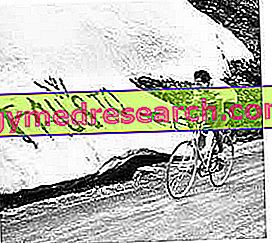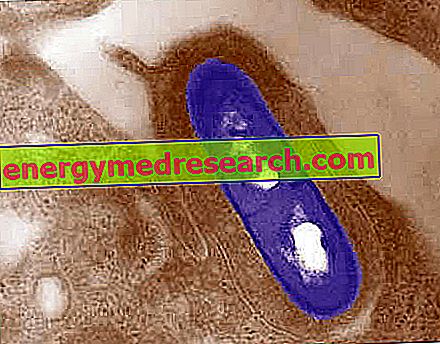Generality
Botany
Saffron (or crocus ) is a plant belonging to the Iridaceae family, Genus Crocus, Specie sativus (binomial nomenclature Crocus sativus );

Saffron has a bulbous root, solid and covered with fibrous tunics; the leaves are long and thin, the scapes (flower-free axis without leaves) carry one or two large, purple, funnel-shaped flowers, which contain the stamens and the pistils.
Use as a spice
From the respective flower (picked in full) the stamens and pistils are extracted which, once dried, represent the most valuable and expensive spice of the entire planet . Such a high monetary value is mainly due to:
- Supply cost of the bulb (plant sterility and need to purchase cloned bulbs)
- Production costs (almost totally manual manufacturing processes)
- Cultivation method (annual or multi-year; the former is much more expensive than the latter)
- Very low profitability (to get 1000g of saffron it takes 60 days of HAND collection to get around 150, 000 flowers and 450, 000 pistils)
- Difficulty picking, since the flowers last only a couple of days.
For all these reasons, the finest saffron reaches the price of € 30, 000 per kilogram .
Geographical distribution
Saffron, probably originating in Kurdistan (between Armenia, Iran and Iraq - although some place it primarily in the Mexican area), as well as in Asia Minor, is also present today on the Mediterranean basin (Italy, Spain, Greece etc). On the Italian peninsula, excellent saffron plantations are appreciated, especially in Abruzzo, in the Marche and in Umbria; there is also no lack in Sardinia and Tuscany.
Saffron is successfully and abundantly produced only in 11 areas of the world, as it needs a warm climate that in winter does not fall quickly and long below 12 ° C (even if the bulbs can survive the snow), dry enough and rainfall average; the soil must be draining and basically steep, devoid of trees and protected by the grufollatori (pigs, wild boar and porcupine) that feed on it.
Notes on cultivation
Saffron grows in the summer period, from June to September; at the end of August the bulbs are moved and maintained (with short storage), while in autumn the flowering begins, to which the withdrawal of the flowers takes place.
As anticipated, saffron can be produced through two types of cultivation: the annual or the multi-year.
- The annual cultivation of saffron involves taking and moving the bulbs every summer. This method allows both to rotate the crop and to monitor the health of the plant. Moreover, the earth can rest and be worked, fertilized and weeded excellently, while the plants are deprived of the old tunic (external covering), of smaller bulbs and undergo a complete check-up to verify any parasitic or fungal infestations. All this has a positive impact on the organoleptic and gustatory qualities of saffron but, on the other hand, requires a decidedly high labor commitment with a consequent steep increase in costs. In fact, in annual cultivation, the only mechanized process is the land clearing and milling, while the picking, cleaning and translation of the bulbs must be done by hand. Storage, for its part, increases the risk of suffering damage to the bulbs by the mice. NB . The annual cultivation is a prerogative of some Italian regions, reputed by most as the best saffron producers in the world.
- The multi-year cultivation, on the other hand, involves moving the saffron bulbs every 4 or 7 years, which makes it possible to significantly reduce costs while increasing the risk of pest infestation. Moreover, due to the greater exploitation of the land, the multi-year cultivation of saffron produces a spice of lower quality.
On the finished product, the price difference between one and the other saffron can reach up to 300%.
Mythology and applications
Since ancient times, saffron has been considered a spice with magical and supernatural properties; the very name of saffron - za'faran (in Persian: crown of angels ) - indicates its yellow color but is also synonymous with light, gold, illumination and revealed wisdom. Not by chance the Buddha and the monks, before setting out on the "path of ecstasy" (point of death), used saffron to color their respective tunics. Even the ancient Egyptians used to use saffron in funeral homes, sprinkling mummies with pistils and allowing the aroma to favor the rise of prayers; Saffron was also used by this people to produce some medicines. The Greeks believed that the saffron flowers originated from the passion fruit between Zeus and Era; the great Hippocrates prescribed it against gout and rheumatism, but it was also used as an environmental aroma for theaters. For the Romans, Jupiter (king of the gods and great lover) used to rest on a bed of saffron; in the Empire, the spice was considered so valuable as to acquire the reputation of "vegetable gold". In the Minoan civilization, saffron was used as a coloring cosmetic. The Babylonians, on the other hand, used it as an environmental perfume together with incense and myrrh. In Jerusalem, saffron and henna were mixed to dye the face and again for environmental flavoring.
Saffron has always been attributed with meanings such as wisdom and riches, but also medicinal functions of great importance such as tonic and aphrodisiac abilities. In reality, as we shall see, if it is true that saffron contains a large quantity of antioxidant molecules, it is equally true that it must NEVER be the object of abuse.
Medicinal properties
Archaic and ancient medical-pharmaceutical botany
In Ayurvedic medicine saffron was used against liver and kidney diseases, such as emmenagogue and aphrodisiac. In the traditional Chinese, on the other hand, they were presumed to be antidepressant, preventive of menstrual disorders and post-partum complications. The Doctrine of the Segnatura used saffron against hepato-biliary diseases, while Culpeper considered it an excellent remedy for the heart and considered it a pro-digestive, as well as a sedative for cough (but at the same time it highlighted its narcoleptic properties and risk of convulsions to abuse). Ecercerc suggested the use of saffron to calm gastric cramps or as an emanagogue for dysmenorrhea and ovarian failure. NB . The smell of saffron is so intense that the first botanists, after long exposures, experienced its intoxicating, almost narcotic, but capable of triggering severe headaches.
In Western medicine, until the nineteenth century AD, saffron was used as a sedative, antispasmodic, anodine, narcotic, emenagogue and exhilarating; it was also proposed as a remedy for amnesia or weakness of mind, for anorexia, for typhoid fevers, for spasmodic colic, for hepatic congestions, for hypochondria and hysteria.
Contemporary medical-pharmaceutical botany
Currently, bitter-tonic, antispasmodic, coloring and flavoring properties are recognized as saffron. It can also be used against dysmenorrhoea (painful menstruation) producing infusions with 2.0 grams of saffron per liter of water. Using the powdered product, 500-750mg (2-3 capsules) per day are recommended for the 7 days prior to the menstrual cycle; in mother tincture, it is good to use 30 drops 3 times a day. These doses show no side effects.
However, some sources suggest sticking to rather low safety doses because, after a thorough chemical analysis, several probably toxic and abortive molecules were detected. Some symptoms and clinical signs of saffron poisoning are: dizziness, profuse numbness and bleeding due to the reduction of platelets and prothrombin (coagulant factor).
| Nutritional composition per 100 grams of edible part of Saffron: | |||||||||||||||||||||||||||||||||||||||||||||||||||||||||||||||||||||
 | |||||||||||||||||||||||||||||||||||||||||||||||||||||||||||||||||||||
Nutritional values (per 100 g of edible portion) | |||||||||||||||||||||||||||||||||||||||||||||||||||||||||||||||||||||
| |||||||||||||||||||||||||||||||||||||||||||||||||||||||||||||||||||||
Chemical-nutritional analysis
Saffron owes its organoleptic characteristics to the derivatives of zeaxanthin (a carotenoid and a powerful antioxidant).
Two very specific molecules are mainly responsible for the coloring power of saffron: crocetin and crocin (originated by esterification between zeaxanthin and pD-genziobiosio ); obviously, the presence of other carotenoid pigments ( lycopene, carotene, etc.) is observed, but much less concentrated than the aforementioned derivatives. As far as the aroma is concerned, a molecule called safranal (the major component of saffron essential oil) is responsible. The bitter taste of the spice, on the other hand, is given by the picrocrocin ( glyconic form of the safranal ).
Saffron also contains various alkaloids, saponins, phytosterols, simple glucides (fructose), mineral salts (iron, calcium, potassium, phosphorus, magnesium, sodium, zinc, copper, manganese, selenium, etc.) in appreciable quantities and other vitamins (vit .B1, vit. B2, vit. PP etc).
A good saffron could boast the following chemical properties: 30% of crocin, 5-15% of picrocrocin and 2.5% of volatile compounds including the safranal.
Saffron substitutes
Being highly prized but also quite expensive, saffron is often replaced by a surrogate called Safflower . This herbaceous plant of the Asteraceae family, Genus Carthamus, Species tinctorius (commonly known as "Zafferanone" or "Zafferano bastardo") represents a mediocre substitute for saffron, with which it certainly shares the color, but not the taste, which remembers only remotely that original. The active ingredient of Carthamus tinctorius is cartamina . Safflower is instead used more successfully in the production of oil rich in ω-6 and vitamin K.
Bibliography:
- Saffron - Olidea - URRA
- Saffron - M. Maggiani - Feltrinelli
- Course in medical-pharmaceutical botany - A. Targioni - pag. 663-664
- From garlic to ginger - G. La Rovere - L'Airone editrice - Page 121: 124
- Web: //www.itcgspoleto.it/progetti/zafferano/La%20chimica/La%20chimica.htm



